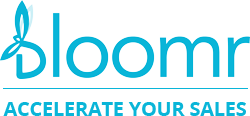Top 6 essential elements that you must look to include in your marketing communication
There are many avenues to market your business and product to customers everywhere. With the advent and rapid growth of digital marketing, it becomes even more important to understand all elements of a good marketing mix comprising both online and offline channels. This way, your business can extract the best of what is on offer within the resources that you have.

Rohit Khatua
The world is getting rapidly smaller and ironically more complex. Gone are the days when a good product or an effective sales channel would ensure that you are able to acquire customers and grow your business. Competition has heated up thanks to – funding avenues, innovative product design and increased customer savviness. But there is another big reason for the complexity – the marketing communication mix, which has much more to offer to businesses. And what’s more, you don’t need deep pockets to use various elements of marketing communication.
To get the best bang for the buck, you need to include these 6 elements in your marketing communication plan.
Here’s the short version of the list
Traditional –
- TV, cinema
- Radio
- Outdoors
- On-ground – events and below-the-line
New-age –
- Online digital marketing
Let’s go into some details about traditional media…
Traditional media has been around for many decades now. Do you recall the newspaper ads, TV ads, outdoor hoardings and memorable radio jingles you remember from childhood?
1) Print – Newspapers/magazines –
These are still a growing category in India where literacy has lots of headroom. Depending on your own business presence plus the readership in relevant regions, both national and regional print media are still popular and effective.
Print reaches mass audiences, provide great visibility to your brand and are relatively less cluttered. National media tends to be quite expensive as compared to regional ones, due to obvious reasons of readership numbers. You will need to select the media carefully to ensure your goals of building awareness are achieved within your budget. Also keep in mind the cost of designing attractive and effective adverts to project your product/brand positively.
2) Television –
TV adds many facets to advertising. Being a visual medium, there is more that can be communicated in more engaging ways. TV also comes with a far better sense of viewer demographics, viewership levels and audience sizes. This allows you to make more informed choices of channels, timing and frequency of your adverts. Producing a TV advert is quite expensive too as it involves actors and technicians. TV adverts get extended to cinema halls too naturally.
By and large, TV is probably the most expensive medium for marketing communication, increasing during special events like sports seasons and movie premieres. TV enjoys a good deal of exclusivity too, for the very same reason.
3) Radio –
Radio is a smaller cousin of the TV in a sense. It’s an aural medium but can be very effective in markets where certain channels are very popular traditionally, or there is low presence of TV or poor cellphone networks. Many pockets in rural India have large die-hard fan bases of radio channels.
4) Outdoors –
Outdoors have always been a common form of marketing medium, with hoarding sizes ranging from small street-lamp posts to massive highway billboards. Typically rented out for a few months, they provide larger-than-life visibility and are useful for hyper-local advertising. A bit expensive, an outdoor plan is a function of quantity and location of the sites.
5) On-Ground –
Events, sports, exhibitions, trade fairs and conferences have always been a great medium to communicate. These are platforms where you get a concentrated and captive audience. You get to interact with customers and also showcase your product more intimately.
On account of their perishable nature, these are typically limited to a few advertisers and sponsors. Visible communication and speaker-slots get your business an uncluttered visibility which is great, if the audience is exactly who you want to be seen by.
Let’s look at new-age media that we all have access to now.
These media are a few decades old and some less than a decade even. However, that doesn’t diminish their importance. On the contrary, they are great media for MSMEs to grow their business organically without burning a hole in the pocket. Online & Digital marketing is in itself a huge universe of possibilities.
1) Business listings –
Having your business listed on the appropriate websites will ensure your presence for potential customers who look you up.
2) SEO (Search Engine Optimization) –
The quality and relevance of content on your website, social media, blogs and any other online presence will give you the edge when customers search for products and services like yours.
3) SEM (Search Engine Marketing) –
Sharpness of your ad content and targeting determines how efficiently your budgets work. With digital marketing, you can ensure that you reach exactly your target group, within your budget. Better optimization of your content will help in getting bigger bang for same bucks.
Key benefits of using digital marketing are:
a) Lower costs and pay-for-clicks
b) Super-sharp targeting capability
c) Managing multiple campaigns
d) Ability to rapidly scale-up or scale-down quickly
4) Social media –
Facebook, LinkedIn, Twitter, Instagram, Pinterest, Snapchat, Whatsapp and more platforms provide you with amazing opportunities to connect with customers, converse with them and increase your reach through influencers.
Both organic and inorganic means exist to widen your follower base that helps increase your product’s brand presence and tap into what else is happening in your market.
5) Email –
Emails are a great way to reach your target customer in an undistracted professional frame of mind. While you can always send emails to people you already have access to, you can also send emails in bulk for a fee to audiences that match your desired demographics.
6) Mobile –
Mobile marketing covers a gamut of features that include voice search, mobile-optimization, location-enabled services and mobile apps. Mobile is slowly becoming the confluence of all that digital marketing has to offer.
While we are on the subject, let us get a quick understanding of using 2 more opportunities effectively – Public relations and Endorsements
1) Public Relations –
PR is about communicating through the press, whether online or offline. While it’s mostly organic being naturally covered by media as news-worthy content, there are also paid channels like advertorials. PR is best used to highlight specific events like launches or new products or corporate interviews.
2) Endorsements –
Endorsements are about leveraging someone else’s visibility to attach it to your product or brand. While it always involves monetary compensation, celebrities today are more careful about associating with brands that sync with their public persona. This is due to general awareness levels being higher, plus public opinions being more visible and also legal implications of their association with a product.
Great, so what do I do next?
Now you have a sense of the top 6 elements of marketing communication. You can access these platforms individually or collectively depending on their application for your business.
Whatever you do, it’s important to try and cross-leverage all these elements, in an organized and systematic manner. In marketing terminology, this is referred to as Integrated Marketing Communications (IMC).

About Author
Rohit Khatua
Rohit is an astute general management, communications and sales leader with 2 decades of wide experience. He has led mandates across MNCs and Indian businesses in top FMCG and financial services organizations. Rohit has headed marketing teams and reinvented corporate brand identities across such businesses.
Rohit’s key skills include brand and product management, marketing strategy, PR & media, digital & social media, communications, consumer insights, campaign management, innovation, market development and managing teams.
Rohit is a well-rounded professional with personal pursuits ranging from blogging and script-writing, painting and fitness.




